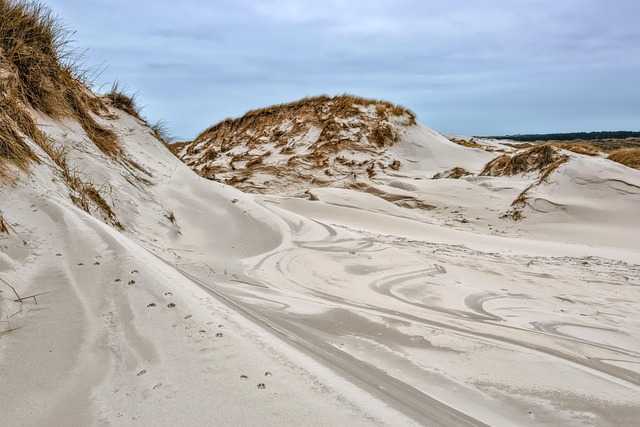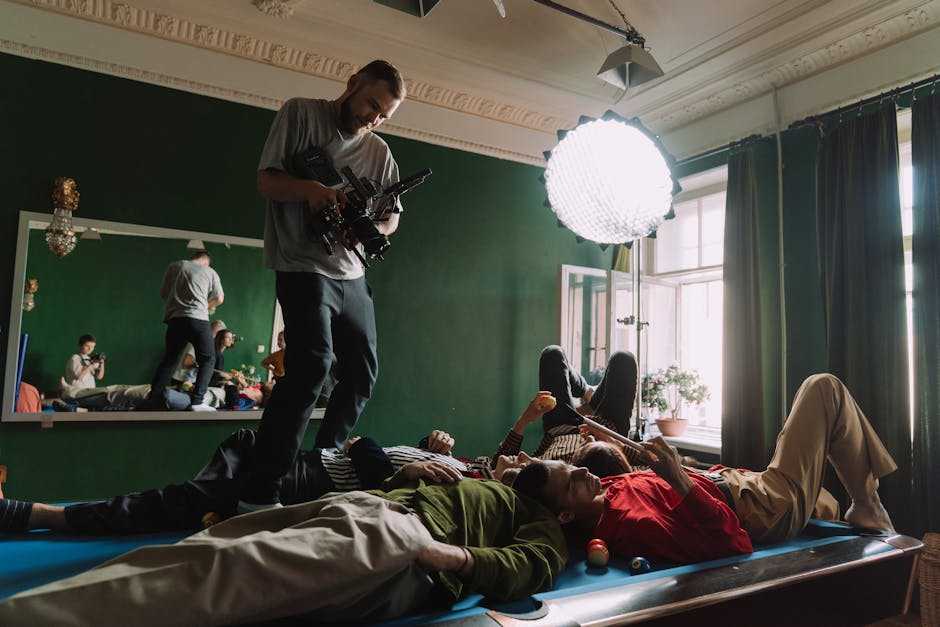Table of Contents
- Exploring the Beauty of Natural Landscapes in Paintings
- Techniques and Styles for Capturing Landscape Splendor
- Choosing the Right Medium for Your Landscape Art
- Tips for Composing a Captivating Landscape Painting
- Q&A
- In Retrospect


Exploring the Beauty of Natural Landscapes in Paintings
Natural landscapes have long been a source of inspiration for artists, capturing the essence of the world in stunning visual forms. From the lush greenery of forests to the majestic peaks of mountain ranges, these scenes evoke a sense of peace and wonder. Every brushstroke and color choice serves to transport the viewer to serene environments that are as captivating as they are calming. Artists often use light, shadow, and texture to convey the time of day or the changing seasons, enhancing the emotional depth of their work.
Many renowned painters have dedicated themselves to depicting the splendor of nature, and their works exemplify the diverse beauty found in different environments. Consider iconic figures like:
- Claude Monet - Famous for his Impressionist approach that perfectly captures reflections in water and the changing hues of landscapes.
- Vincent van Gogh – Known for his vibrant and expressive depictions of rural scenes that blend bold colors with emotional intensity.
- John Constable – Captured the quintessential English countryside with stunning realism and an appreciation for atmospheric effects.
Not only do these artists showcase the physical beauty of nature, but they also invite the viewer to reflect on their own experiences within these landscapes. Each painting offers a glimpse into the artist’s perspective, whether it be a tranquil evening in a sunlit meadow or the fierce energy of a thunderstorm brewing over rugged cliffs. The emotional resonance of these artworks encourages a deeper connection with the natural world, prompting viewers to explore the inspiration behind each piece.
| Artist | Style | Signature Works |
|---|---|---|
| Claude Monet | Impressionism | Water Lilies |
| Vincent van Gogh | Post-Impressionism | The Starry Night |
| John Constable | Romanticism | The Hay Wain |


Techniques and Styles for Capturing Landscape Splendor
When it comes to capturing the grandeur of landscapes, artists have a plethora of techniques to choose from, each offering a distinctive way to express the beauty of nature. One popular approach is plein air painting, where artists work outdoors to directly observe and replicate the vibrancy of their surroundings. This technique allows for a unique interaction between the artist and the landscape, as the changing light and elements influence the final piece. The spontaneity of plein air painting encourages quick brush strokes and a focus on the essence of the scene rather than intricate details.
Another effective method for rendering landscapes is layering technique, which involves building up multiple layers of paint. Artists often start with an underpainting to establish composition and tonal values, gradually adding layers to create depth and texture. This process is especially useful in depicting elements like mountains, forests, and skies, allowing for a more dynamic representation. Furthermore, utilizing tools such as palette knives or sponges can add a captivating element to the texture of the natural features.
In addition to traditional painting techniques, incorporating mixed media adds a contemporary twist to landscapes. This method allows artists to combine materials like paper, fabric, or even photographs with paint, creating a visual tapestry that tells a multifaceted story. Through this approach, artists can introduce unexpected textures and layers of meaning, captivating viewers and encouraging a deeper connection with the artwork.
Lastly, understanding and applying different color theories are essential for portraying landscapes effectively. The use of complementary colors can enhance vibrancy, while analogous colors offer harmony. Artists might choose to create a color palette that reflects the emotional tone they wish to convey—be it the warmth of a sunset or the cool tranquility of a misty morning. In doing so, they not only depict the physical beauty of a landscape but also evoke feelings and experiences tied to that particular environment.
Choosing the Right Medium for Your Landscape Art
When embarking on a journey to create landscape art, one of the first decisions you’ll need to make is which medium to use. The choice of medium can significantly affect the final outcome, influencing both the appearance and the texture of your artwork. Each medium offers distinct characteristics that can enhance the way your landscape is perceived. From traditional oil paints to contemporary digital formats, understanding the strengths of each can guide you toward making a well-informed selection.
Oil paints are timeless for their vibrant colors and rich textures. They allow for lengthy blending and layering, enabling artists to create depth and realism within their landscapes. Though they require longer drying times, this attribute can be advantageous for artists seeking to merge colors seamlessly. Alternatively, acrylic paints dry quickly, allowing for a faster painting process and experimentation with layering. They can be easily modified to create a variety of effects, from glazes to thick impasto.
For those looking to explore different paths, watercolors offer a delicate and translucent quality that captures the essence of light in landscapes. This medium is ideal for creating soft washes or detailed, controlled strokes, making it especially suited for capturing atmospheric conditions. If you prefer a more modern approach, consider using digital mediums. Digital painting tools enable flexibility, allowing you to undo mistakes, easily manipulate colors, and even experiment with different styles without the mess of physical paints.
Ultimately, your selection should reflect both your personal style and the vision you have for your artwork. Here’s a brief comparison of popular mediums:
| Medium | Characteristics | Best For |
|---|---|---|
| Oil Paint | Rich colors, longer drying time, depth | Realism, layered textures |
| Acrylic Paint | Quick drying, versatile, vibrant | Experimental, layered effects |
| Watercolor | Translucent, soft washes | Atmospheric landscapes, detail work |
| Digital Art | Flexibility, editable, clean | Modern styles, experimentation |
Choosing the right medium not only enhances your creative expression but also allows your landscape art to resonate with viewers, evoking emotions and thoughts that bridge the connection between nature and perception. Consider your artistic goals, the message you wish to convey, and experiment with various mediums to find the perfect fit for your artistic vision.


Tips for Composing a Captivating Landscape Painting
To create a stunning landscape painting, start by understanding the fundamentals of composition. Consider using the rule of thirds—divide your canvas into a 3×3 grid and place focal points at the intersection lines to draw the viewer’s eye. Balancing elements such as trees, mountains, and clouds can help create a more engaging composition. Be mindful of the horizon line; lower it for an expansive sky or raise it for dominant foreground details.
Colors play a pivotal role in landscape painting. Choose a palette that reflects the mood you want to convey. Warm colors like reds and oranges can evoke a sense of warmth and intimacy, while cool colors such as blues and greens typically suggest calmness and tranquility. Experiment with layering colors to create depth, utilizing techniques like glazing or scumbling for a unique texture that will enhance the visual appeal of your piece.
Lighting is an essential aspect of landscape painting that can transform a scene dramatically. Observing how light interacts with your subjects can create depth and enhance the overall composition. Remember to consider the direction of the light when determining shadows and highlights. Capturing the golden hour or the soft embrace of twilight can add a magical touch to your work, making it more relatable and vivid.
infuse your personal style into the painting. This could be through the use of specific brushstrokes or unique color combinations that reflect your artistic voice. Keep a sketchbook handy to jot down ideas or quick studies of landscape scenes that inspire you. Regular practice will enhance your skill and confidence, allowing your distinctive approach to shine through in your artwork.
Q&A
Q&A: Exploring the World of Landscape Paintings
Q1: What are landscape paintings? A1: Landscape paintings are artistic representations of outdoor scenes, capturing the beauty of nature. From sweeping vistas of mountains and valleys to serene depictions of forests and rivers, landscape art aims to evoke emotions and transport viewers to tranquil settings.Q2: What techniques are commonly used in landscape painting? A2: Artists employ various techniques to bring landscapes to life, including oil painting, watercolors, and acrylics. Techniques such as layering, glazing, and brushwork help create depth and texture, while choices in color palette and perspective enhance the overall atmosphere of the piece.
Q3: Who are some famous landscape painters? A3: Throughout history, numerous artists have excelled in landscape painting. Notable figures include Claude Monet, known for his Impressionist scenes; Vincent van Gogh, celebrated for his vibrant interpretations of nature; and John Constable, who masterfully captured the English countryside. Each painter offers a unique perspective on the landscape genre.
Q4: How has landscape painting evolved over time? A4: Landscape painting has undergone significant transformations since its inception. Initially, it was often relegated to the background of historical or religious works. However, during the 17th century, it gained prominence as a standalone genre. Modern movements have introduced concepts like abstract landscapes and environmental themes, reflecting contemporary issues and artistic exploration.
Q5: What are common themes found in landscape paintings? A5: Themes in landscape paintings often revolve around nature’s beauty, the passage of time, and humanity’s connection to the environment. From serene scenes that evoke tranquility to dramatic portrayals of storms or changing seasons, these artworks often reflect the artist’s mindset and the world around them.
Q6: How can someone start appreciating landscape paintings? A6: To appreciate landscape paintings, take time to observe the details: the use of color, light, and composition. Visit galleries or museums and engage with various styles and periods. Reading about the artists and their techniques can also deepen your understanding and appreciation of the narratives behind the works.
Q7: How can landscape paintings enhance my living space? A7: Landscape paintings can bring vitality and warmth to your living environment. They foster a sense of calm and connection to nature, making them ideal for spaces where you relax or gather with family. Choosing pieces that resonate with your personal aesthetic can transform your home and create inviting atmospheres.
Q8: Are there any modern trends in landscape painting? A8: Yes, modern landscape painting often incorporates mixed media, abstract elements, and environmental consciousness. Artists may blend traditional methods with digital techniques or use unconventional materials to convey their messages. This evolution reflects ongoing dialogues about nature, sustainability, and artistic innovation.
Engaging with landscape paintings opens up a vast realm of beauty and introspection, inviting us to explore the intricate relationship between nature and art. Whether an artist or an admirer, each encounter with landscape art is an opportunity to connect with the world around us.
